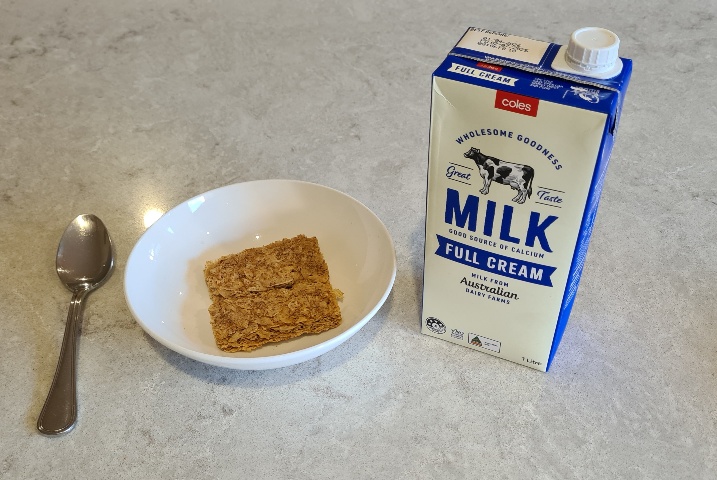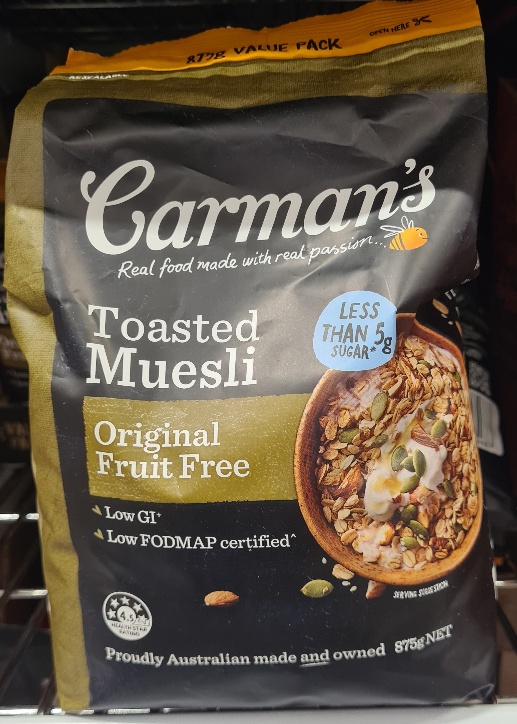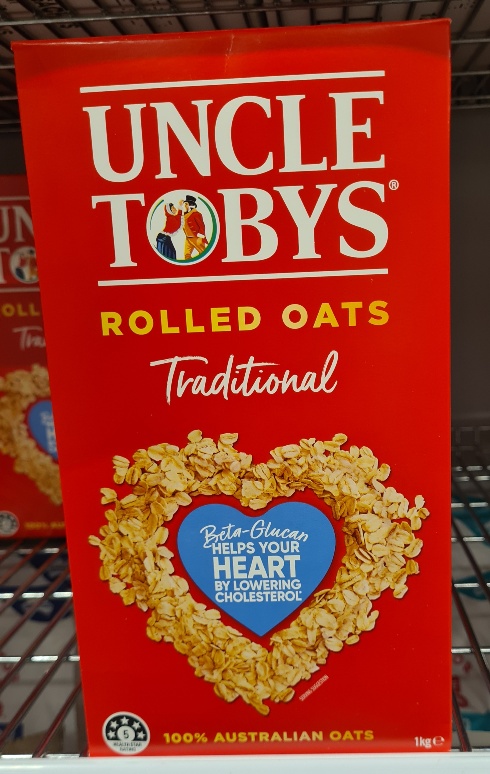Learn English while learning about daily life in Australia, with Rob McCormack
Podcast Number 164 – A Typical Australian Breakfast
(This podcast is 12 minutes and 4 seconds long.)
Hi,
Having done a lot of travel in Europe and some in America, I always find it interesting to experience the different types of food eaten in other countries. In particular, I find there are interesting differences in what people eat for breakfast. In this podcast, I would like to talk about what Australians typically eat for breakfast, which some people say is the most important meal of the day.
I should start by saying that there is great variety in what people eat for breakfast in Australia. This is because we are a multicultural nation, with immigrants from just about every country in the world. Therefore, it is to be expected that you will find much variation in breakfast foods in our population. In this podcast however, I will describe my personal breakfast choices during my life, along with those I have observed and learnt from my family, friends and acquaintances.
On week days, when most adults and children are heading to work or school, an Aussie breakfast will typically be quick and simple. For most people, that means either cereal with milk in a bowl, or toast with butter or margarine, plus a favourite topping. Added to that will be a drink of some kind, such as tea (mostly with a dash of milk), coffee with a dash of milk (often instant coffee or coffee made using capsules), perhaps a drink of Milo (which I talked about in Podcast 92 https://slowenglish.info/podcast-92-milo/ ) or a fruit juice. I would say that most fruit juice would be out of a carton or bottle, rather than freshly squeezed. On week days, with everybody rushing to get ready for the day, most people don’t have the time to make freshly squeezed fruit juice.
My personal breakfast favourite for most of my life has been cereal with milk. I have had periods where I preferred a couple of pieces of toast with margarine and Vegemite, but somehow, I always return to cereal with milk. It’s quick to prepare, cheap and tasty.
When I was a child, I enjoyed Weeties which my mother bought for us. You can still buy Weeties today, made by Uncle Tobys, an Australian company which started in the 1860’s. Weeties are made from whole grains of wheat which are steamed, rolled and then toasted.
Today, I prefer Weet-bix, which is the same sort of thing, but made into small bricks of flattened, toasted wheat grains. It is made by Sanitarium, an Australian company founded in 1898. I eat 2 Weet-bix with milk each morning. However, I can imagine that hard working men and women, or growing children, or active sports people, would eat more than that. Sanitarium produce clever Weet-bix advertisements which ask, ‘How many do you do?’
Occasionally I also eat muesli, which is a breakfast cereal mixture made from rolled oats, nuts, seeds and dried fruits and eaten with milk like other cereals. I do enjoy muesli although it tends to be more expensive than other breakfast cereals.
Another popular breakfast cereal is porridge. This is made from oats which have been rolled. The one disadvantage of eating porridge is that it must be cooked with water until it goes soft and mushy. This can be done quickly in a microwave oven, or in a saucepan on the kitchen stove. Either way, there is some effort and time involved. I must say, that porridge is very tasty, but for many people, having to cook it is a disadvantage.
There are many different types of specially made breakfast cereals too, such as Rice Bubbles, Corn Flakes and Nutrigrain, just to mention a few. Go to any supermarket and you can see these and many others on the shelf. At different times I have eaten and enjoyed Rice Bubbles and Corn Flakes. My personal view is that you should check how much sugar and other ingredients have been added to any cereal you select. Often, they can be high in added sugar, which is something we should all eat in moderation.
For those people who prefer toast for breakfast, the range of toppings which people select is large. First a thin layer of butter or margarine is my preference, then a topping. I mentioned that Vegemite is popular in Australia, although it must be spread thinly on the toast. The taste can be over-powering if it is spread too thickly. I talked about Vegemite in Podcast 68 (https://slowenglish.info/podcast-68-australias-vegemite/).
Other popular toppings are jam (for example strawberry, plum, blackberry), marmalade (made from oranges, one of my personal favourites), honey (also a favourite of mine) and peanut butter, which is especially tasty. These toppings are all sweet to some degree. You can also have fresh fruit toppings such as sliced berries or sliced banana, which are tasty and very healthy. Finally, you could have a savoury topping such as cheese, sliced tomato, canned fish or fresh avocado, the last of which is very popular with some people these days – the sky is the limit for toast toppings really. However, I think the most common toppings found on breakfast toast in Australia would be the sweet ones, as they come in a jar or can and are easy to serve. Every Australian kitchen would have a toaster which everyone knows how to operate. Make your toast, spread with butter or margarine, open the jam or Vegemite jar and spread with a knife – hey presto, you have your week day breakfast.
On the weekend, many people have the time and desire to eat something a little more elaborate. Bacon and eggs are often fried for a traditional hot breakfast, sometimes with sausages and usually with buttered toast and perhaps a few fried tomato slices or sliced mushrooms. Hard boiled eggs or poached eggs (which are eggs cracked into simmering water) are also sometimes enjoyed for breakfast. Omelettes are also regularly cooked on the weekend, or perhaps some pancakes. Such a breakfast takes longer to prepare and to serve. If I am feeling like something more than my usual cereal, then fried eggs with fried bacon is what I cook, served on a couple of pieces of buttered toast. If my wife and I are travelling and staying in a hotel, then this style of breakfast is always my choice in the breakfast restaurant.
Of course, many people’s choices for breakfast are also influenced by their cultural background including their religion, so for them, perhaps some of my choices as outlined in this podcast would not be an option, which I fully understand. Also, different people may place a different importance on how healthy a breakfast is. I can also understand and agree with this perspective. I think the main thing is that you start the day with something which gives you energy for the day ahead. After all, that’s what breakfast is for.
If you have a question or comment to make, please leave it in the comments box at the bottom of this page. Or, you can send me an email at rob@slowenglish.info. I would love to hear from you. Tell me where you live, a little bit about yourself and what you think of my Slow English podcast. I will write back to you, in English of course. If you would like to take a short quiz to see if you have understood this podcast, you will also find it on my website. Goodbye until next time.
Rob
Podcast 164 Quiz - Did you understand the podcast?
You can take the quiz as many times as you like.
Vocabulary
acquaintances = people you know, but who are not really friends
advertisements = notices which tell you that you should buy something because it’s good
avocado = a type of fruit with soft insides around a large seed
bricks = shapes which are like a small box
capsules = small containers used to hold something (e.g. coffee)
carton = like a bottle, but made form special paper which is waterproof
cereal = the grains grown for food (e.g. wheat), breakfast food made from grains
choices = the things you chose or select
clever = smart
eat in moderation = don’t eat too much
elaborate = more complicated
expected = what others think you should or will do, what is likely to happen
experience = to do something and find out what it is like
flattened = when something is pressed and it becomes flat
founded = when you created (started) a company or organisation
grains = example wheat, corn, oats
hey presto = ‘like magic’
immigrants = people who have come to a new land to live without returning to their old country
in particular = when talking about one thing or one group of things
influenced = affected by
ingredients = the things you put together in order to make something
margarine = an oily spread like butter, but made from natural oils such as sunflower oil
mention = to talk about something
multicultural nation = a country where there are people from many different lands and cultures
mushy = soft
observed = when you have seen things with your own eyes
omelettes = a type of pancake made with eggs for breakfast
over-powering = too strong
perspective = view, opinion
population = the people who live in a country
preferred = something which you like instead of something else
prepare = to make
saucepan = used to cook things on a stove. Made from metal
savoury = food that is not sweet
simmering = boiling hot but not boiling strongly
squeezed = when you squash something with your hand, eg, an orange gives juice when squeezed
stove = uses heat to allow something to cook
style = types
to some degree = not fully, but partly
topping = the things you put on top of something
typically = when something is seen many times, what is normal
variation = a change from one case to the next
variety = many types of




